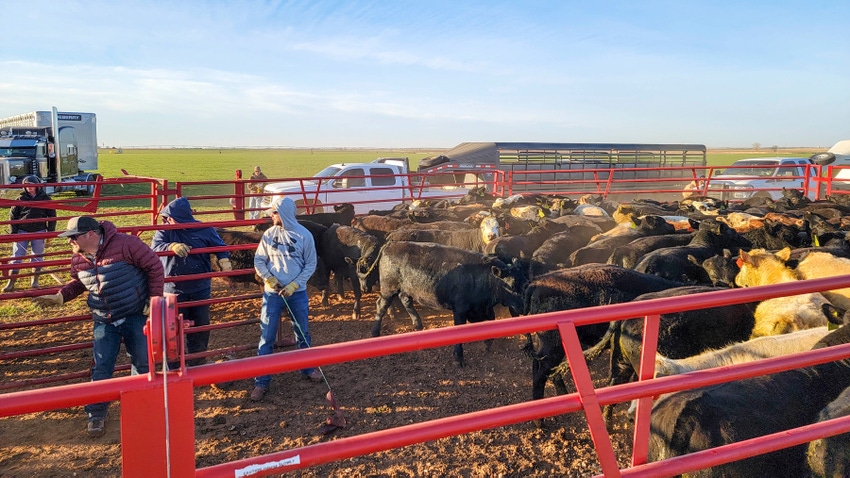Elevate Your Expertise with Bagley Risk Management
Elevate Your Expertise with Bagley Risk Management
Blog Article
Recognizing Animals Danger Security (LRP) Insurance Policy: A Comprehensive Guide
Navigating the realm of animals danger protection (LRP) insurance can be an intricate venture for many in the agricultural market. This kind of insurance uses a safety net against market fluctuations and unexpected conditions that might affect animals manufacturers. By comprehending the complexities of LRP insurance policy, manufacturers can make enlightened choices that might secure their operations from financial dangers. From exactly how LRP insurance functions to the various protection alternatives readily available, there is much to reveal in this thorough overview that could possibly form the way animals producers come close to risk administration in their services.

Exactly How LRP Insurance Coverage Functions
Periodically, comprehending the technicians of Livestock Danger Protection (LRP) insurance policy can be complicated, but damaging down how it works can offer quality for farmers and ranchers. LRP insurance policy is a risk monitoring device developed to shield livestock manufacturers against unforeseen price decreases. It's vital to keep in mind that LRP insurance policy is not a profits warranty; rather, it concentrates entirely on price risk protection.
Eligibility and Protection Options

When it comes to coverage options, LRP insurance coverage uses manufacturers the versatility to select the insurance coverage degree, coverage period, and endorsements that best suit their threat management needs. Coverage levels normally range from 70% to 100% of the anticipated finishing worth of the insured animals. Producers can likewise select protection periods that straighten with their manufacturing cycle, whether they are insuring feeder cattle, fed cattle, swine, or lamb. Recommendations such as rate danger protection can even more personalize protection to shield against negative market changes. By comprehending the eligibility criteria and coverage alternatives offered, livestock producers can make educated decisions to take care of threat effectively.
Advantages And Disadvantages of LRP Insurance
When evaluating Livestock Risk Security (LRP) insurance coverage, it is crucial for livestock manufacturers to evaluate the advantages and downsides intrinsic in this danger monitoring device.

One of the main advantages of LRP insurance coverage is its capability to supply security against a decrease in livestock rates. This can help secure manufacturers from monetary losses resulting from market changes. Additionally, LRP insurance policy uses a degree of versatility, allowing producers to personalize insurance coverage degrees and policy periods to fit their certain requirements. By securing an ensured cost for their animals, manufacturers can better manage danger and strategy for the future.
Nonetheless, there are also some drawbacks to take into consideration. One constraint of LRP insurance policy is that it does not protect against all sorts of dangers, such as disease break outs or all-natural catastrophes. Costs can often be expensive, specifically for the original source producers with large animals herds. It is vital for manufacturers to carefully assess their individual risk direct exposure and economic scenario to identify if LRP insurance policy is the best threat administration device for their operation.
Comprehending LRP Insurance Policy Premiums

Tips for Maximizing LRP Benefits
Optimizing the benefits of Animals Threat Protection (LRP) insurance coverage needs strategic planning and positive threat administration - Bagley Risk Management. To take advantage of your LRP protection, consider the following tips:
Consistently Evaluate Market Conditions: Keep informed about market patterns and price changes in the livestock market. By keeping an eye on these elements, you can make informed choices concerning when to buy LRP coverage to shield against prospective losses.
Set Realistic Protection Levels: When selecting insurance coverage degrees, consider your manufacturing prices, market value of animals, and potential threats - Bagley Risk Management. Setting realistic coverage levels ensures that you are appropriately protected without paying too much for unneeded insurance policy
Expand Your Insurance Coverage: Rather than depending entirely on LRP insurance, take into consideration diversifying your threat management methods. Combining LRP with other threat monitoring tools such as futures agreements or options can provide comprehensive coverage against market uncertainties.
Review and Adjust Insurance Coverage Frequently: As market problems transform, occasionally evaluate your LRP insurance coverage to ensure it aligns with your current threat exposure. Adjusting insurance coverage degrees and timing of acquisitions can aid optimize your danger security technique. By following these ideas, you can make the most of the benefits of LRP insurance policy and protect your animals procedure against unpredicted dangers.
Verdict
In verdict, livestock danger security (LRP) insurance policy is a useful device for farmers to take care of the monetary risks connected with their animals operations. By comprehending just how LRP works, eligibility and protection alternatives, along with the benefits and drawbacks of this insurance, farmers can make educated choices to safeguard their livelihoods. By very Bonuses carefully thinking about LRP costs and carrying out strategies to optimize benefits, farmers can minimize prospective losses and make certain the sustainability of their operations.
Livestock manufacturers interested in acquiring Livestock Threat Security (LRP) insurance can explore a range of eligibility criteria and insurance coverage choices tailored to their certain animals procedures.When it comes to coverage choices, LRP insurance provides producers the adaptability to choose the insurance coverage level, coverage duration, and endorsements that finest match their danger management demands.To comprehend the intricacies of Livestock Risk Security (LRP) insurance coverage totally, understanding the aspects site link influencing LRP insurance coverage premiums is vital. LRP insurance premiums are figured out by numerous aspects, consisting of the coverage level picked, the expected cost of livestock at the end of the coverage duration, the type of livestock being guaranteed, and the size of the coverage duration.Evaluation and Readjust Protection Routinely: As market conditions transform, regularly evaluate your LRP protection to guarantee it aligns with your present threat exposure.
Report this page